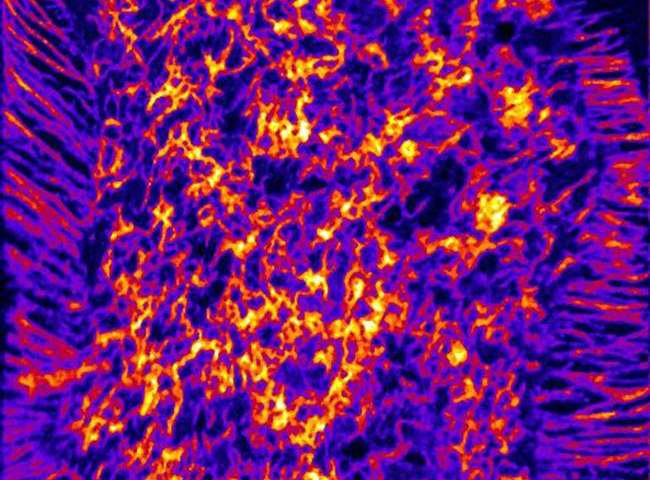Finding new ways to study cholesterol distribution on cells
Researchers from the UCLA Institute and the University of Western Australia have developed a new way to monitor the distribution of cholesterol in cells and tissues. This finding again provides important information in the movement of cholesterol on the cell so that it can find the binding mechanisms of cholesterol with coronary artery disease .
By using the high resolution imaging method NanoSIMS, the team was able to visualize and quantify cholesterol activity on the cell surface.
Until now, cholesterol was known as an essential fat to maintain plasma membranes in every body cell. However, if high blood cholesterol levels increase the risk for coronary artery disease.
Cholesterol can reach the cell membrane to regulate cholesterol production, destroy excess cholesterol and, most specifically, on the cell membrane, cholesterol can bind to bacteria proteins.
By taking advantage of bacterial proteins along with NanoSIMS images, the researchers found that the amount of cholesterol can reach the cell membrane however they are unevenly distributed. Instead, they focus on reaching specific areas on the plasma membrane called microvilli.

The co-author of the study, Dr. Stephen Young, professor of genetics at David Geffen School, said: " In the past, there were a number of other UCLA scientists who have discovered and identified that the microvilli region also plays an important role in controlling the movement and distribution of cholesterol, and this latest finding again provides an important premise to confirm that the finding is even more convincing. ' .
This research has just been published in the Proceedings of the National Academy of Sciences.
The co-author of the study, Dr. Haibo Jiang, notes that the image taken by NanoSIMS provides insight into the distribution of cholesterol on cell membranes and will help researchers evaluate the digging mechanism. waste excess cholesterol on cells in the future.
" We want to better understand the movement mechanism of cholesterol in cells and tissues, " said Jiang, a lecturer at the Center for Microscopy at the University of Western Australia. " We hope that images taken by NanoSIMS will be an important precursor to finding new therapies to lower blood cholesterol levels or at least optimize the effects of cholesterol-lowering drugs . "
Young Young added: " The plan now is to use NanoSIMS to incorporate new biochemical approaches, to investigate the distribution of cholesterol and their movement on many types of cells in the body ."
You should read it
- Top 7 foods that help reduce blood cholesterol best
- How to reduce blood cholesterol effectively?
- Foods high in cholesterol: What should be eaten? What type should be avoided?
- What is cholesterol? Distinguish good cholesterol and bad cholesterol in the body
- High cholesterol can make arthritis worse
- 7 best foods to help control cholesterol
- Using statins can reduce the risk of dangerous blood infections
- Finding the single gene can help you avoid heart disease
- Warning: Statins should not be used to combat Parkinson's disease
- 'Elixir' for health but everyone is throwing away without knowing it
- Found enzymes that eliminate cholesterol help prevent brain damage
- A low-sodium diet can help you deal with hypertension
May be interested

The study found four genes involved in cysts in the liver and kidneys

Science to discover new proteins increases the effectiveness of vaccines

Two new types of blood cells were discovered

Mold sunflower seeds contain toxins that cause liver cancer

A newly discovered protein helps treat colitis

Unbelievable story: Indian frog skin mucus kills the flu virus






 Foods high in cholesterol: What should be eaten? What type should be avoided?
Foods high in cholesterol: What should be eaten? What type should be avoided? What is cholesterol? Distinguish good cholesterol and bad cholesterol in the body
What is cholesterol? Distinguish good cholesterol and bad cholesterol in the body How to reduce blood cholesterol effectively?
How to reduce blood cholesterol effectively? Top 7 foods that help reduce blood cholesterol best
Top 7 foods that help reduce blood cholesterol best High cholesterol can make arthritis worse
High cholesterol can make arthritis worse Found enzymes that eliminate cholesterol help prevent brain damage
Found enzymes that eliminate cholesterol help prevent brain damage